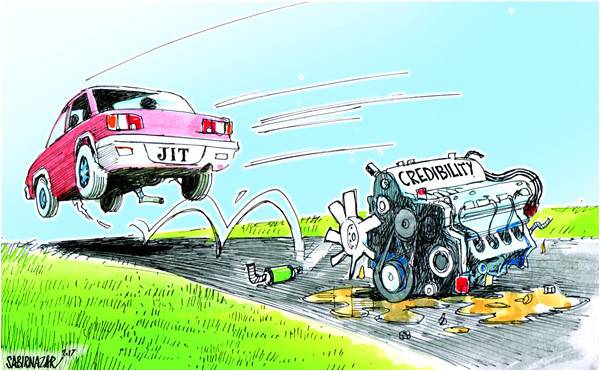
Donations and ads
Sir,
Islam puts special emphasis on charity. God has said that if you give charity publically, it is good, but if you conceal it and pay it privately to the needy it is better for you. This will compensate for some of your evil acts. Thus, it is preferable for charity to be done secretly and without putting on a big show of it to people around you.
Regretfully, and unfortunately in Pakistan, which is supposed to be an Islamic country, doing charity or philanthropy seems to have become a kind of business, especially in show business. We see this unfold every day in dozens of advertisements on electronic and print media. We saw this mostly for hospitals and charity organizations, which asked for donations in the forms of Zakat, Fitra and Sadqa in continuous ads that aired on TV from the first of Ramadan till Eid-ul Fitr. By asking for donations these philanthropic organizations publically announced and let other people know their identity. This seems to go against the Islamic injunctions of keeping your charity work under wraps. The largest and the most organized charity organization in Pakistan, the Edhi Foundation, for example, does not advertise for donations, or the hides of sacrificial animals. It quietly helps needy people and receives major donations from across Pakistan. Every penny received is used for the wellbeing of the needy, and is not spent on advertising in the print and electronic media. I also question the choice of ads these charities make; they show sick children in a bid to elicit sympathy so they can get donations.
I am also appalled by the television shows that give away gifts in Ramazan in games. It seems to go against the spirit of helping deserving people. They put people in a strangely subservient position. It is almost demeaning to see them so keen to get a motorcycle or car or some appliance.
Aamir Aqil,
Lahore.
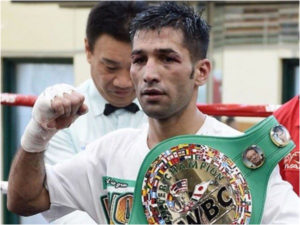
Boxer Waseem
Sir,
I wish to congratulate the 29-year-old Muhammad Waseem for becoming the first Pakistani to hold a top ranking at the professional WBC level. I learnt that the Quetta-based boxer will be leaving for Panama on June 29 after which he will have a bout with a local boxer on July 5 and then another one on July 29. He believes that South American countries have a good boxing culture; in Panama there are very competitive boxers and he feels these two fights will give him that boost and help him get back in form.
Once again I want to congratulate him for his superb victory and I pray he is successful.
Bakhtiyar Baloch,
Kech Turbat.
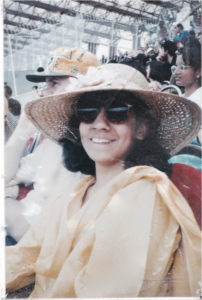
Asna Riaz
Sir,
This is my darling sister Asna Riaz and it’s her birthday June 24. This photo was taken at the Cricket World Cup Final in Lahore in 1996. Australia vs. Sri Lanka. Sri Lanka won. Two years later we lost her to Cystic Fibrosis.
She raged, raged against the dying of the light, surprising even her doctors.
We remember and celebrate her extraordinary warmth, her persistent emphasis on love and friendship, her sparkling wit and, ultimately, tremendous courage today and evermore.
Her memory beats in the hearts and minds of those who knew her: the thousands of children from underprivileged backgrounds who have received an education free of cost in the school in her name (run by The Citizens Foundation - TCF); in my production company ‘Asna Pictures’ registered now both in Pakistan and the US, which so far has brought out one short and one full-length feature film; and, in the work I hope to do with the wonderful people at the Cystic Fibrosis Foundation upon my return to New York.
‘Come let’s laugh again, set our hearts alight again... what has come before, let’s bring back in memory... let’s make a tune of it, a song to sing...’ (Faiz Ahmed Faiz).
Umar Riaz,
Lahore.
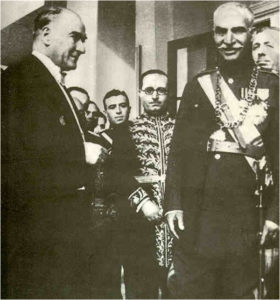
Turkish-Iranian alliance
Sir,
Iran and Turkey, the two non-Arab Middle Eastern states, are among the largest and most populous in the region. The former occupies a strategic location on the Persian Gulf and the Strait of Hormuz, while the latter controls the Straits the Bosporus, the Sea of Marmara, the Dardanelles that link the Black and Aegean Seas. The two nations descend from the most ancient civilizations in the world and have strong national identities. Turkey and Iran have been mirror images of one another, rarely seeing eye to eye, but unable to part ways due to their geographical proximity. Turks were exposed to Persian culture on their move westward and inherited indelible political and religious legacies. Iran is home to a large Turkic minority, and historically, Persia was ruled by Turkish royal families such as the Safavids and the Qajars. In modern times, as well there was always a cooperation between these two neighbouring nations. In the 1920s, a new Turkey under Mustafa Kemal Ataturk and a new Iran under Shah Reza Pahlavi signed the Saadabad Pact for non-aggression and mutual defence against outside enemies. The two nations later forged the Baghdad Pact, which included the newly independent Iraq. Even the seizure of power by Iranian mullahs in 1979 did not shake the solid foundations of mutual relations. While almost all nations quickly imposed or re-imposed visas for Iranians, Turkey kept its doors open to visitors and refugees from Iran.
But because of the Syrian conflict relations between the two countries were at all time low as Turkey and Iran have been on opposite sides of the conflict in Syria. But the unilateral strategic choices of both have not succeeded on the ground. Neither Turkey’s choice to seek the toppling of Syrian President Bashar al-Assad nor Iran’s policy of restoring stability in a unified Syria has materialized. Moreover, Iran and Turkey have been targeted by ISIS, hence both realise that they have a common threat. The problem of Kurds also seems to bring Ankara and Tehran closer together. The Turkish government is currently waging an open and bloody war against Kurdish opposition led by the PKK and Syrian Kurdish organisations are accused of cooperation with the United States and Israel which concern Iran. Therefore, Kurds are becoming a common problem for Ankara and Tehran. Hence both the nations are exploring avenues to formulate a joint anti-Kurdish strategy. Most recently the Saudi-Qatar crisis bought Turkey and Iran even closer as both nations are supporting Qatar. Turkey’s parliament passed a bill for increased deployment of Turkish troops in Qatar for the protection of the Qatari Royal family and Iran had offered to send food to Qatar by sea.
Let’s take a look at how the two nations are cooperating with each other on multiple fronts. Both sides have been exploring together diplomatic solutions to the Syria war. Ankara and Tehran have agreed to speed up the Astana talks aimed at facilitating a political solution to the Syrian crisis. There is growing energy and commercial relations between Turkey and Iran. The Turkish president, on a recent visit to Iran, reaffirmed Turkey’s determination to increase trade with Iran to $30 billion annually, saying Ankara saw no obstacle to the development of its cooperation with Tehran. Another important area of cooperation is Iraq as Iraq will likely to settle on a political condominium over the Kurds. Ankara wields influence over one of the KRG’s two main rival factions (the Kurdistan Democratic Party) and Tehran maintains hegemony over the other (the Patriotic Union of Kurdistan). This suggests that Ankara and Tehran will also be the non-IS opposition’s main sponsor in the north going forward.
Turkey and Iran have some areas of disagreement but still they have agreed to compartmentalize their relations on different fronts. For instance, while the two nations will continue to disagree on some aspects like their individual Syria policy (e.g., Assad’s future), they would both cooperate in other areas such as economic, Kurdish policy and anti-IS strategy. In the longer-term Tehran knows that Turkey will play a key role in building potential bridges between Iran and the West. Ankara knows that if it seeks greater influence within all corners of the Arab world, including Shia populations, a cordial relationship with Iran is important. Thus, while the regional landscape remains complex and in motion, Turkey and Iran have more to gain than lose by continuing to build stronger ties. But one thing is very much clear that the closeness of these two players will create a strong political, security and economic bloc in the Middle East in coming times. These two important nations of the region should also realise that by forging a renewed alliance among themselves they also shared a greater responsibility to contribute to a secure and stable regional order in which there is no place for extremism and sectarianism.
Manish Rai
Editor, Views Around
Via email.
No 3G in Parachinar
Sir,
Here in Parachinar we have a lot of problems with connectivity. We do not have any network that works except for Jazz. 3G services to do not work and often our communications are cut off. We have to use landlines. Our ability to use the internet is always compromised. We suffer because we cannot get our message out to the world. We recently suffered a media blackout as well. Our local journalists say that their stories are not given importance. We recently lost a lot of lives.
Hussain Toori,
Parachinar,
Kurram Agency.
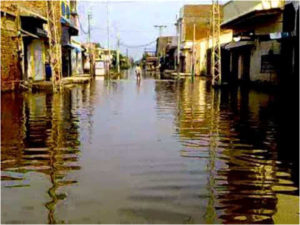
Help my people
Sir,
I am writing this to raise my voice for the victims of Hashim Nagar, Mirpurkhas. These people have been suffering. They live poverty-stricken areas and their only crime is being born into families that live hand to mouth. They simply don’t earn enough to be able to make ends meet.
Hashim Nagar is a vastly over-populated zone with just one government school in town. The school is a six-room dull building with more than 500 students. It offers only primary and secondary classes. The do not allow their daughters to continue with their studies after graduating secondary school. The institution has no female teachers since the system is co-educational. There is no drinking water, no compound walls and absolutely no electricity here during the summers.
The people here are mostly villagers and consider girls a financial burden beyond a certain point. They marry their daughters off at a very young age for this reason. The other schools are located too far away from town which means that the children can’t walk to it. And there is no public transportation that works this route.
It is my request to all government officials, the secretary for education and civil society members to at least visit Hashim Nagar once to get an idea of what its challenges are and who its people are. I am sure they will find that the people who live here friendly.
The new budget passed by the National Assembly for the fiscal year 2018 is about two trillion rupees but we still see, year after year, that so many young people are still out of school. Despite these budgets each year, we find people in places like Hashim Nagar still struggling to send their children to school, get sanitation and water supplies and basic healthcare.
According to news reports, the Sindh government has decided to give 2,000 rupees for rations as part of the Benazir Income Support Programme (BISP) and a total of 7,000 rupees every three months for approximately 18 lakh people. It would perhaps have been much better had the Pakistan Peoples Party instead undertaken some constructive work that would have kick-started the economics of such places so that needy people would get jobs. This would make more sense that just giving them a stipend.
Sara Illahi Panhwar,
Via email.
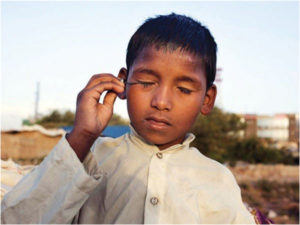
Kajol dangers
Sir,
Putting Kajol or black eyeliner or kohl in a child’s eyes is a tradition in Pakistan but few people know that this practice can lead to conjunctival infections among other problems. These traditional eye cosmetics are familiar to people as “surma” as well and they think that they are healthy to apply. People think that this eyeliner promotes vision, beauty, and protects from eye infections and the evil eye. Others simply think it makes a child look more beautiful. These people have no idea how harmful they are.
It does not help that surma is so cheap and readily available in the market. One company has been advertising on the radio as well. The problem is that these products do not advertise their ingredients or comply with any safety standards.
Kohl is a cultural non-paint source of the chemical Lead (Pb). Lead is a heavy metal and has been designated as a subtle neuropoison that is toxic. This kohl has been used for hundreds of years, which is why it is regarded as safe. In order to make it easier to apply, manufacturers also add colours and other chemicals. But what people do not realize is that it is a harmful chemical for every system in the body. It is absorbed by crossing into the blood where it is measured in terms of blood lead levels (BLL). It eventually affects the brain, kidneys, liver, heart and bones but worst of all, what people don’t realize is that by applying it to their eyes they are risking blindness.
Unlike with adults, children’s brains are more susceptible to lead poisoning, which is a prevalent and striking issue, say healthcare workers. If lead is present in the body of a pregnant woman as well, then her child is at risk. Its neurotoxic nature can result in retarded and delayed mental development, which consequently affects learning ability. Other symptoms include headache, depression, nervousness, hypertension, body pain, speech disabilities that badly affect a child’s IQ, and in some cases can even lead to death.
Studies have ascertained that kohl is a major source of lead exposure in children and the US Food Development Authority (FDA) has restricted the concentration of lead to less than 20mg/l in cosmetic products. Taking a glance at a 1988 study conducted in Faisalabad that was published in the Journal of the Medical Association of Pakistan, I saw that the experts had proven that there were more than 65% levels of lead in eye cosmetics and surma. The amount of lead in local black eye cosmetics ranges from 16% to 80% but the concentration of lead in Pakistani cosmetics ranged from 0.03% to 81.37%, which merits special attention. One surma product is actually banned in the US. But it is still available in Pakistan.
There is a dire need to create awareness among the public about the perilous and damaging effects of these cosmetics. The authorities such as the Centers for Disease Control and Prevention (CDC), Environmental Protection Agency (US EPA) and World Health Organization (WHO) must press Pakistani authorities to ban these substances.
Saleha Mahmood,
Environmentalist
Lahore.

